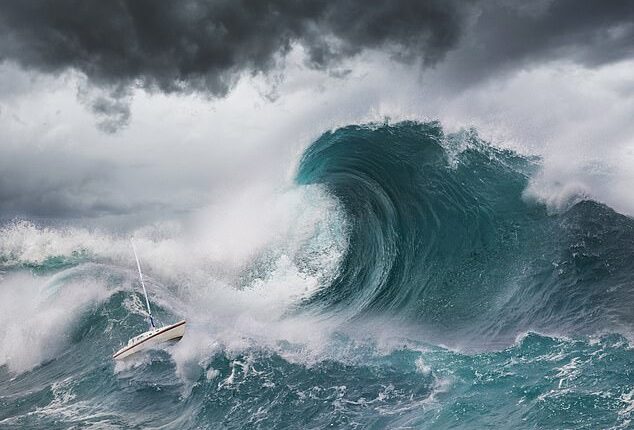US monitoring stations that protect millions living along the West Coast from devastating natural disasters are set to go dark in just two weeks.
The National Oceanic and Atmospheric Administration (NOAA) has cut funding for nine seismic stations in Alaska which act as an early warning system for tsunamis that could flood states like California, Oregon, Washington, and Hawaii.
These nine Alaska sensors have helped protect the whole Pacific side of the US since the late 1990s, detecting major earthquakes that can trigger giant ocean waves which can strike areas hundreds or even thousands of miles away.
However, NOAA slashed the $300,000 needed to keep the stations running as part of larger budget cuts ordered by the Trump Administration this year.
The Alaska Earthquake Center (AEC) had requested funding for the tsunami monitors through 2028, but NOAA denied the request in late September.
The nine stations, which are scattered across Alaska’s Aleutian Islands and the Bering Sea, will now go offline at the end of November.
Without them, warnings could come minutes later than they normally would, which might not leave enough time for people to get to safety.
Mike West, the Alaska state seismologist and director of AEC told the Anchorage Daily News: ‘The tsunami threats from Alaska are not just an Alaska problem.’

Mega tsunamis can be triggered by events such as landslides or volcanic island collapses. Scientists believe an asteroid impact triggered a mile-high mega-tsunami during the time of the dinosaurs (Stock Image)

The nine seismic stations set to close are scattered throughout Alaska’s Aleutian Islands and the Bering Sea
In recent months, multiple earthquakes near in the Pacific have set off tsunami warnings in the US, including one in Hawaii in September after a massive 7.8 magnitude seaquake near Russia’s Petropavlovsk-Kamchatsky region.
Right now, there is no solid ‘Plan B’ announced when it comes to seismic monitoring in the area.
The AEC can’t afford to keep them going on their own without the federal funding, and there are no nearby replacements ready to take over.
Alaska Senator Lisa Murkowski has pushed for a review of the funding cuts and to restore the real-time monitoring equipment in the state, according to KTUU.
‘The system doesn’t collapse if you lose one measurement,’ a senior NOAA official told The Washington Post on the condition of anonymity. ‘But it creates holes in the network of observations.’
This year alone, AEC has detected over 24,000 earthquakes using high-tech seismic equipment protected in well-shielded huts on the remote islands.
While the majority of these tremors have been small, major earthquakes that surpass magnitude 7 can trigger a tsunami, with the closest populated areas to the wave having only moments to get to higher land before a wave hits.
In 1946, three years before the tsunami alert system was created, a major earthquakes in the Pacific unleashed a massive tsunami which crashed into Hawaii and killed over 150 people.

Although massive earthquakes are felt most intensely near the epicenter, their power can send out energy which ripples through the ocean and the Earth’s crust for thousands of miles

A magnitude 9 earthquake in the northwest US could destroy half a million homes and cause the deaths of countless people. Pictured: Aftermath of the 9.0 quake that struck Japan in 2011
A recent study published in the Proceedings of the National Academy of Sciences has warned that a colossal earthquake along the Cascadia Subduction Zone (CSZ) in America’s Pacific Northwest is almost assured to take place by 2100 and will unleash another deadly tsunami.
If an earthquake between 8.0 and 9.0 in magnitude struck today, scientists warned that a 100-foot mega tsunami would wipe out most of the West Coast, as the coastline would drop by almost eight feet instantaneously.
The Federal Emergency Management Agency (FEMA) estimated that there would be 5,800 deaths from a CSZ earthquake alone and another 8,000 due to the mega tsunami it would unleash.
In July, a powerful 7.3 magnitude earthquake struck the Alaska, sending seismic shockwaves racing through the Earth’s crust for thousands of miles.
The quake triggered a tsunami warning for parts of coastal Alaska and rattled a vast swath of the Pacific Rim.
Although the shaking was felt most intensely in southern Alaska, the energy released by the quake traveled through the Earth and activated seismic sensors on the US East Coast, across the world in Europe, and even reached parts of Asia and Africa.







